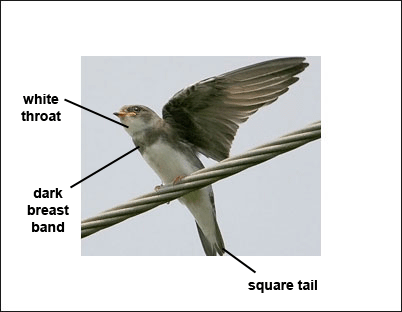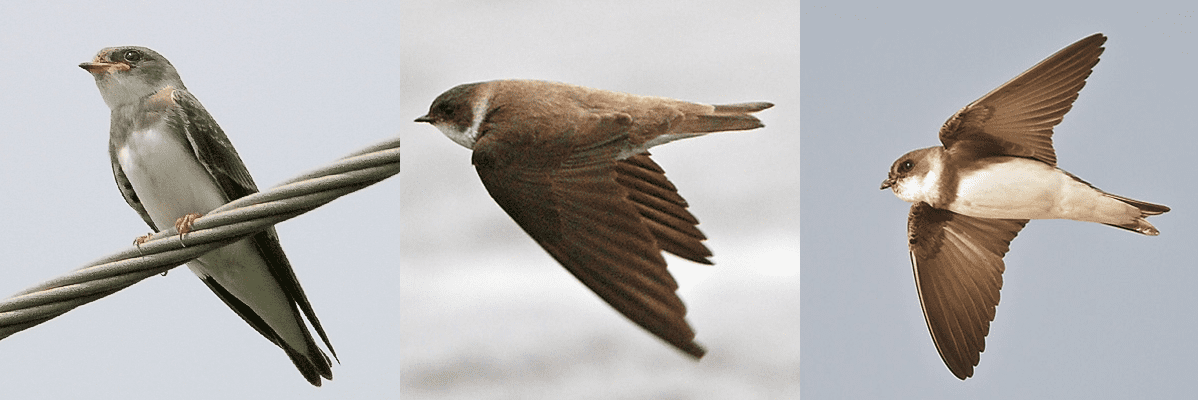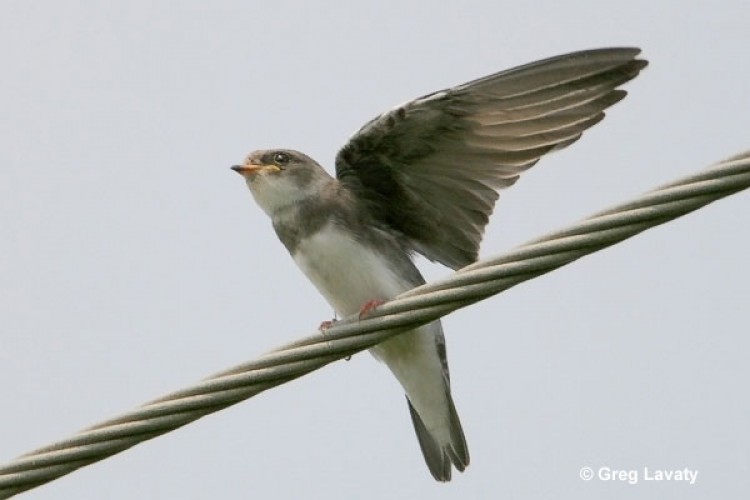Known as the Sand Martin in other parts of the world, the Bank Swallow is very widely distributed. Bank Swallows are also very social, usually nesting in large colonies. Males begin excavating a nest burrow, and once they find a mate, both birds finish the excavation together.
Sometimes flood control projects can eliminate suitable banks for Bank Swallows to nest in, but other human activities such as gravel quarries and road cuts can provide the steep, vertical banks needed for nesting.
On this page
Description of the Bank Swallow
BREEDING MALE
The Bank Swallow has brown upperparts, and white underparts with a well defined, dark breast band. The tail is brown and slightly forked. Length: 5 in. Wingspan: 13 in.

Female
Sexes similar.
Seasonal change in appearance
None.
Juvenile
Juveniles are similar to adults.
Habitat
Bank Swallows inhabit fields, marshes and streams; always near water. They nest within vertical banks of sand or dirt.
Diet
Bank Swallows primarily eat insects.
Behavior

Photographs © Greg Lavaty and Glen Bartley.
Bank Swallows forage by capturing prey in flight using their open mouth.
Range
Bank Swallows are found nearly worldwide. In North America, Bank Swallows breed from southern Canada south to the southern U.S. They winter in South America. The population is stable.
Wing Shape
The shape of a bird’s wing is often an indication of its habits and behavior. Fast flying birds have long, pointed wings. Soaring birds have long, broad wings. Different songbirds will have a slightly different wing shape. Some species look so much alike (Empidonax flycatchers) that scientists sometimes use the length of specific feathers to confirm a species’ identification.
Wing images from the University of Puget Sound, Slater Museum of Natural History
Fun Facts
The Bank Swallow is the smallest North American Swallow.
Bank Swallows nest colonially, sometimes in groups as large as 3,000 pairs.
Vocalizations
The typical song consists of a series of buzzy notes.
Similar Species
Purple Martins
Purple Martins are considerably larger. Male martins are all dark. Females lighter underneath.
Northern Rough-winged Swallow
Northern Rough-winged Swallows have a buffy or grayish throat without a breast band.
Nesting
The Bank Swallow’s nest is bulky mass of twigs, straw, grass, leaves, and mud placed at the end of a 2-3 foot burrow within the side of a cliff or sandy bank.
Number: 3-6 eggs.
Color: White.
Incubation and fledging:
The young hatch at about 14-16 days and fledge at about 19-23 days, though remaining dependent on the adults for another several days.
Bent Life History of the Bank Swallow
The Bent Life History for this species will be posted at a later date.


